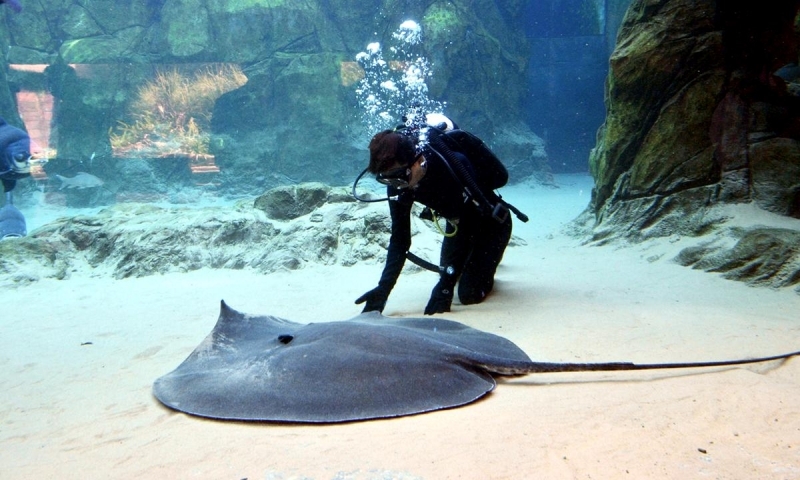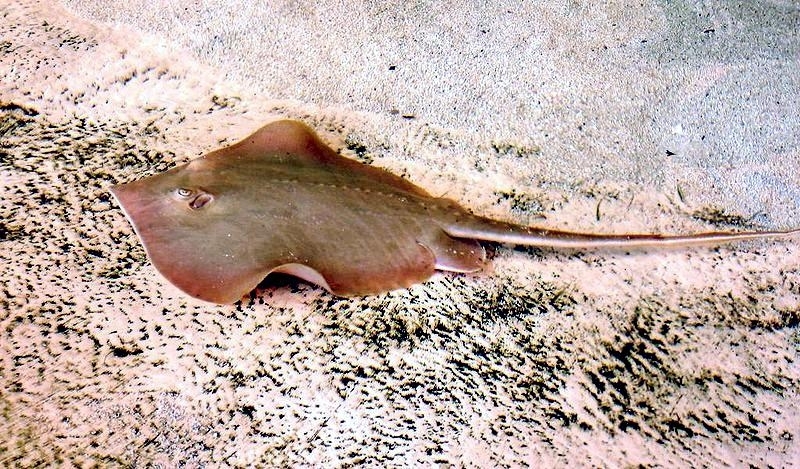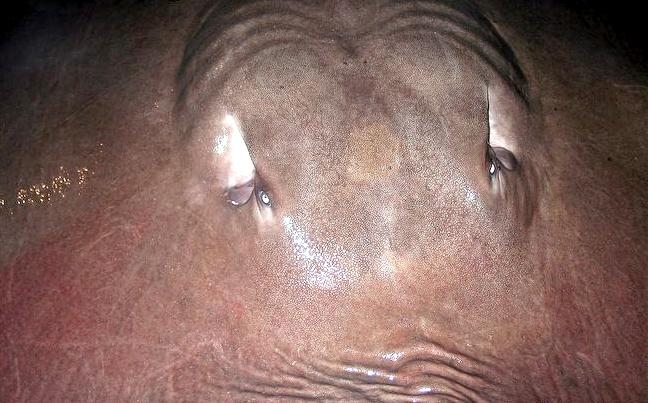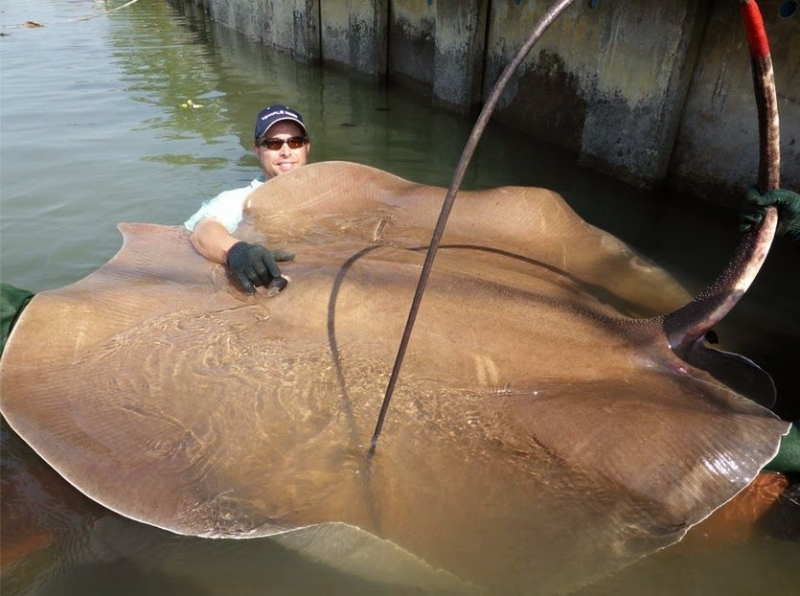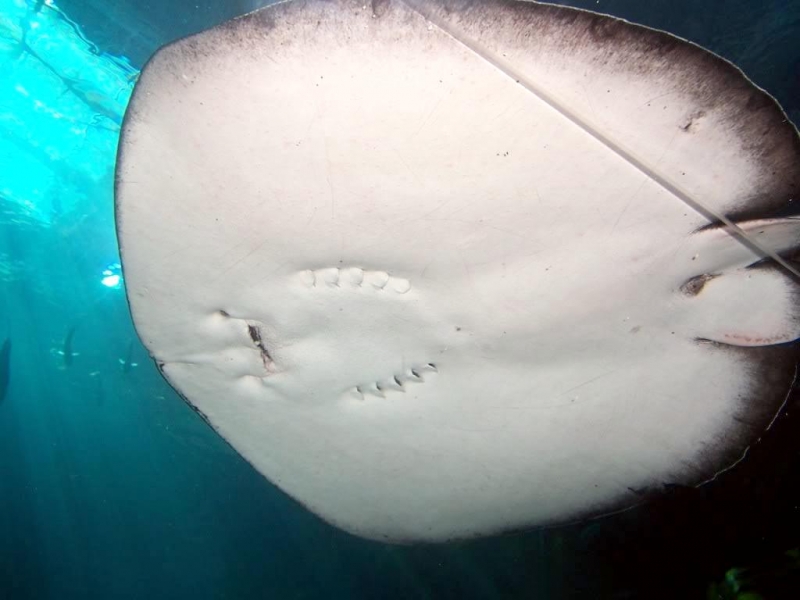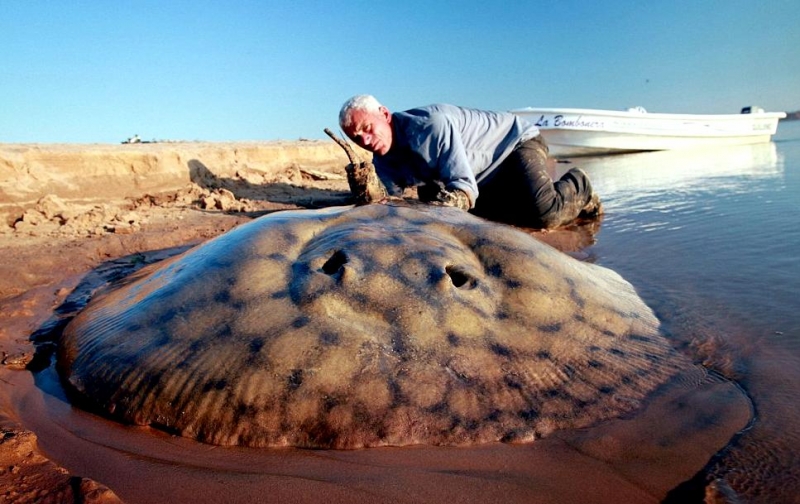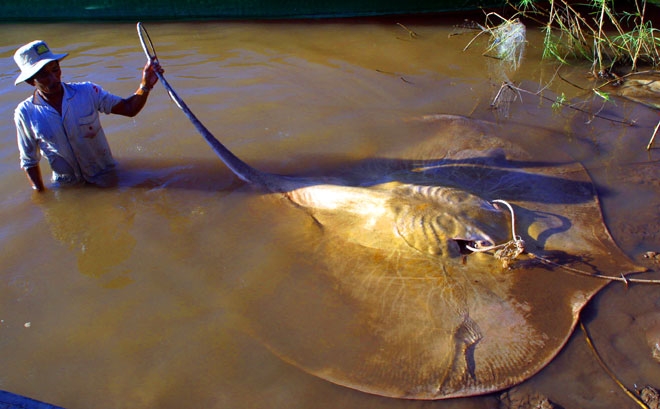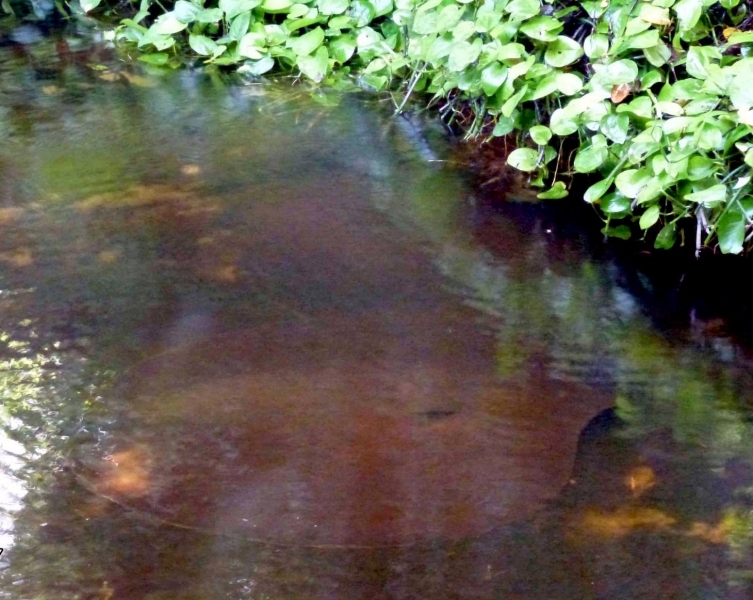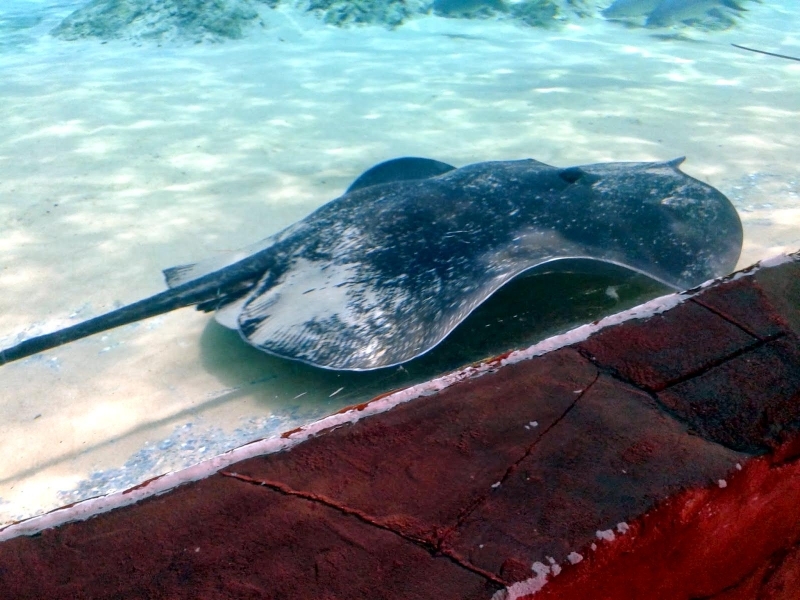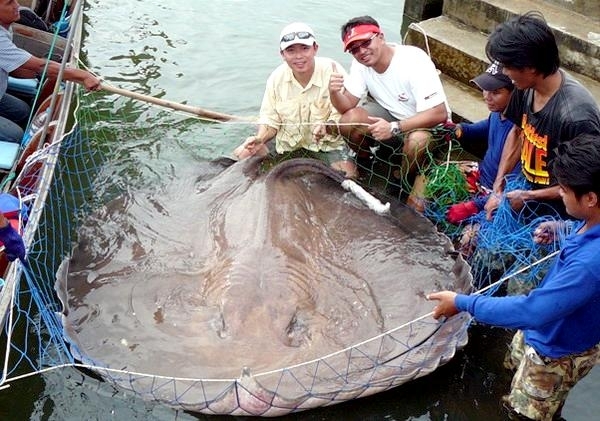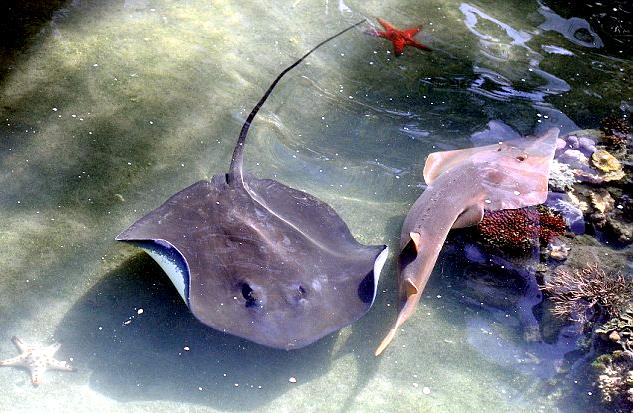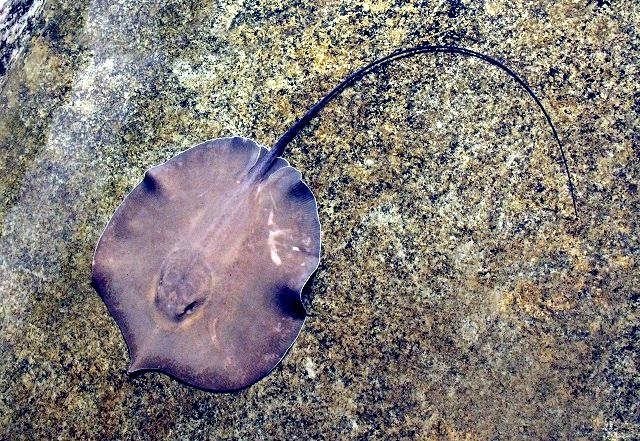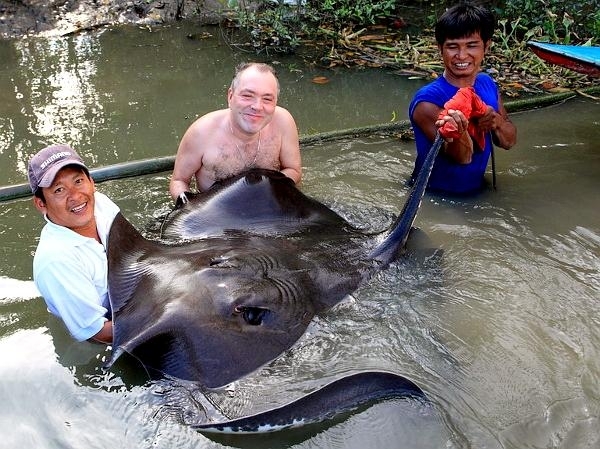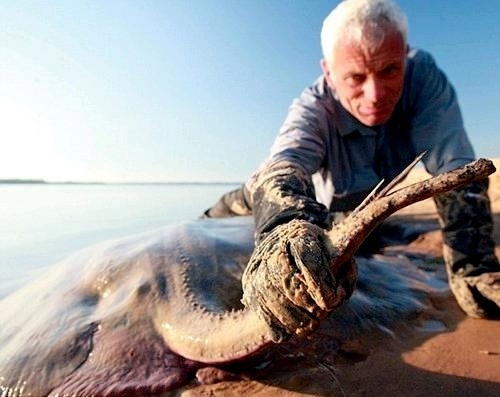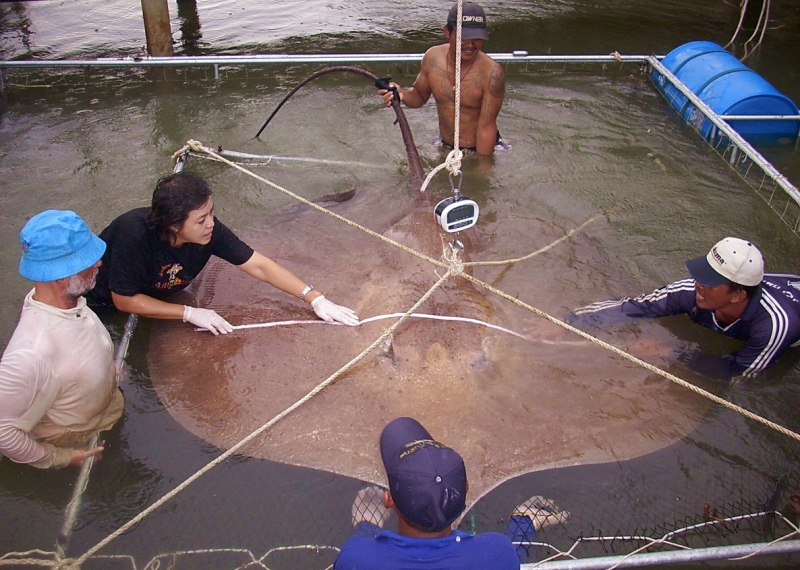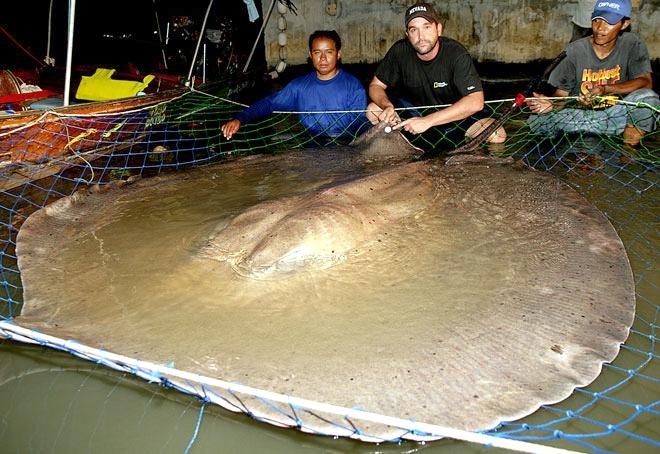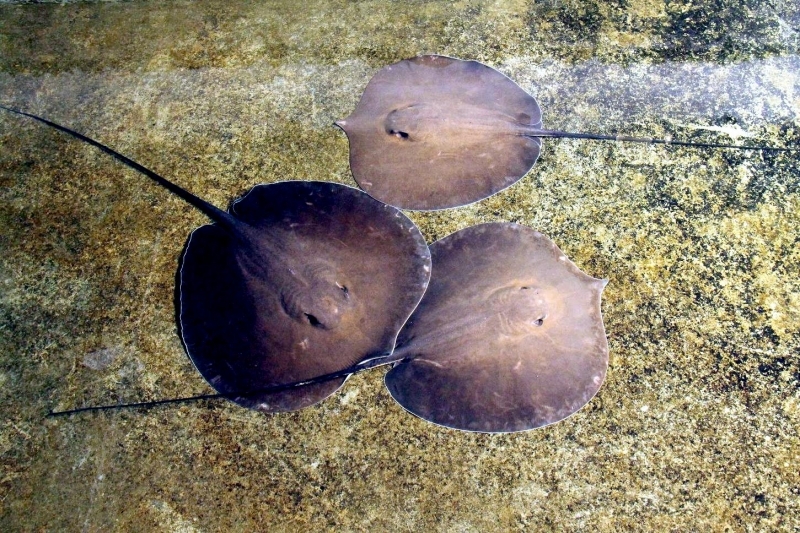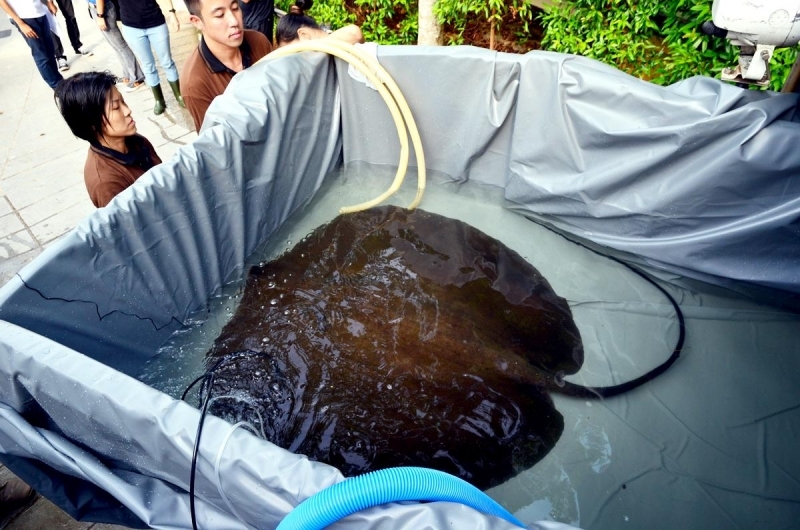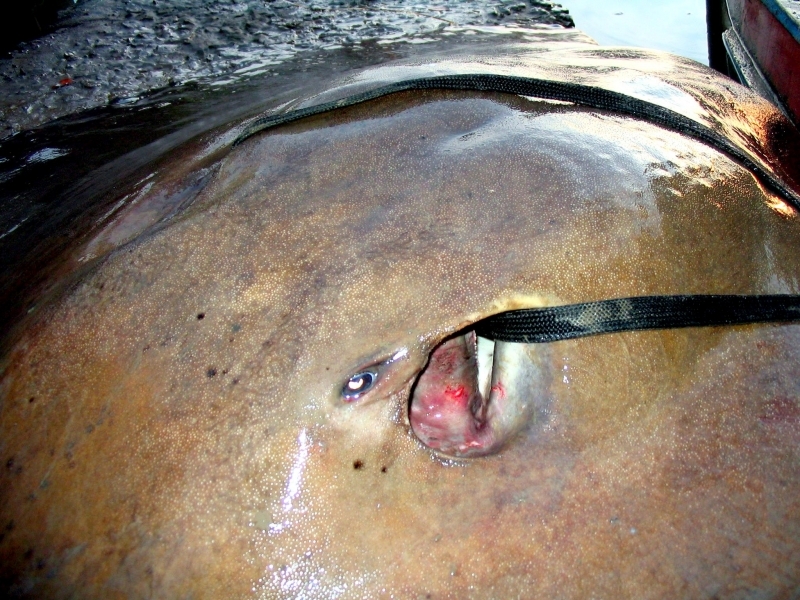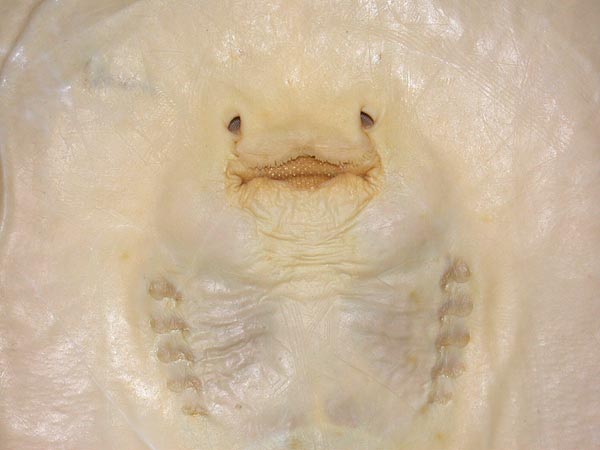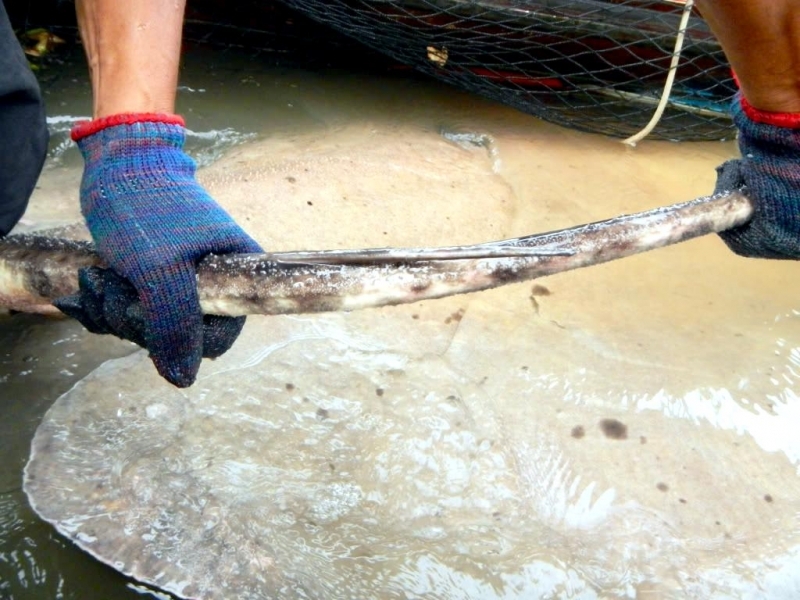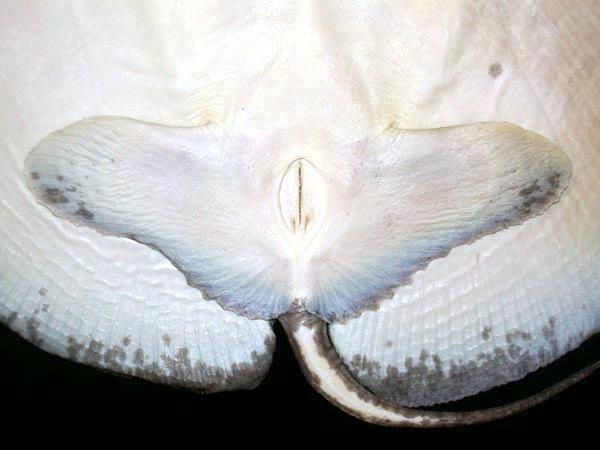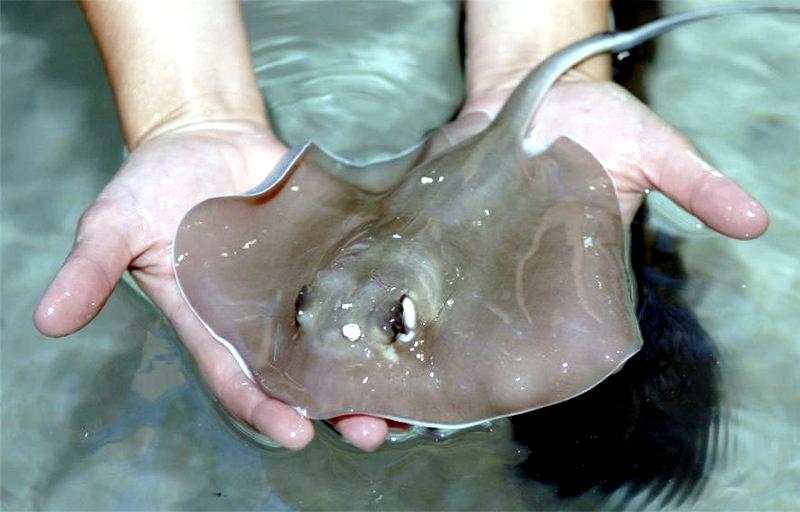“Himantura chaophraya”
The Giant Stingray is one of the world’s largest freshwater fish, but it’s also cloaked in mystery. No one is sure how many Giant Stingrays are left, which habitats they prefer or even if they ever venture into the ocean where their more commonly known relatives dwell. These ancient fish have changed little over many millions of years, can reach 16.5 feet (5 meters) long & weigh up to 1,320 pounds (600 kilograms). They are brown to gray in color, wide and flat in form and they sport a long, whip-like tail. Giant Stingrays are known to prowl river systems in Thailand, Borneo, New Guinea and northern Australia. They often bury themselves in sandy or silted river bottoms and breathe through holes or spiracles, located on top of their bodies. Giant Stingrays locate prey usually clams and crabs, with a sensor that can detect an animal’s electrical field. Giant Stingray numbers appear to have dropped dramatically in recent years as their river habitats have degraded and it appears they no longer inhabit some parts of their historical range. Large Giant Stingrays have been known to pull boats upstream and even underwater. Though stingrays do not readily attack humans, they are one of the few mega-fishes that can pose a real danger to those who handle them. Each Giant Stingray sports a deadly barb on the base of its tail that can easily penetrate human skin and even bone, much like a hunting arrow. This stinger can be as long as 15 inches (38 centimeters) and typically introduces toxins to the victim’s wound. If the stingray loses one of its barbs while defending itself, it immediately begins to grow a new one. Giant Stingrays shed & re-grow their spines on a regular basis regardless of whether they use them.
The Giant Stingray can grow to be as long as 16.5 feet and weigh as much as 1,200 pounds, potentially the largest freshwater fish on the planet. If that’s not enough to get your attention, it’s also arguably the most bizarre-looking one with its outlandishly wide, pancake-flat body and whip-like tail. It’s believed to spend its days lurking in dark, muddy river bottoms in Thailand, Cambodia, Borneo, New Guinea and Western Australia but the Giant Stingray is as mysterious as it is exotic. It wasn’t discovered by humans until around 1990, even though the is likely an ancient species millions of years old. Southeast Asian fishermen have caught a few big Giant Stingrays over the years, mostly by accident but there are tales of even more enormous freshwater Giant Stingrays that dwell in the remote Cambodian back-country. Because it was only recently discovered, there’s relatively little information available about the Giant Stingray, compared to more familiar species of fish. Its lifespan for example, remains unknown and although they’ve only been discovered in rivers, it’s unclear whether the fish ever venture into saltwater. Giant Stingrays are seldom seen because they lead a stealthy existence.
They often bury themselves in sandy or silted river bottoms, where they breathe through holes or spiracles, located on the tops of their bodies. Thus concealed, they await prey, usually clams & crabs and can detect an animal’s presence by its electrical field. Though they recently have become a prized catch for sport fishermen, destruction of river habitat is probably a bigger threat to the Giant Stingray’s existence. Lately, Thailand adventure tourism impresarios have been promoting Giant Stingrays as a fun challenge for sport fishermen because of their impressive size & reputation for fighting hard when hooked. The Thailand companies are not always as forthcoming about the potential risks of tangling with one of the bigger specimens, who’ve been known to pull boats upstream and even underwater. Though a Giant Stingrays won’t target & attack a human when confronted, it’s capable of inflicting a gruesome injury. The 15-inch barb on the base of its tail can penetrate flesh & bone as easily as an arrow. If you’re going after one of these behemoths, be sure to use heavy tackle, since they can snap a lighter line. Also, be prepared to come home with a good story about how the big one got away. Once a Giant Stingray manages to get back down to the river bottom, it’s almost impossible to move. Most fishermen cut bait (quit) after several exhausting & fruitless hours of struggle.
